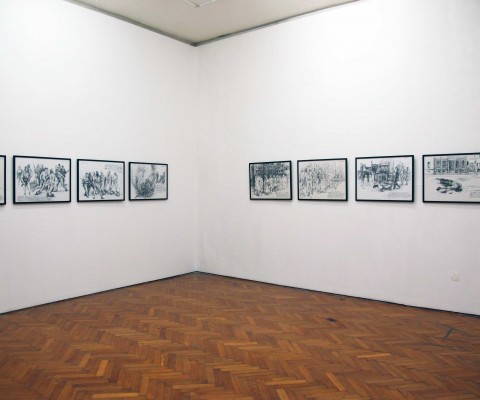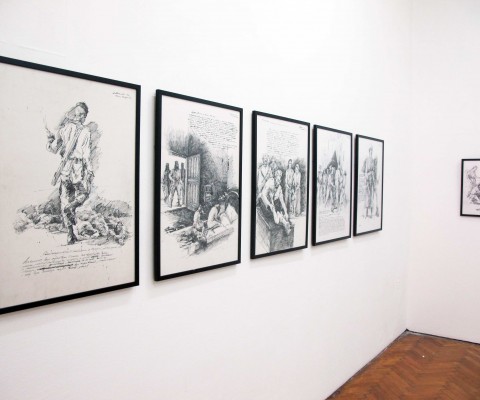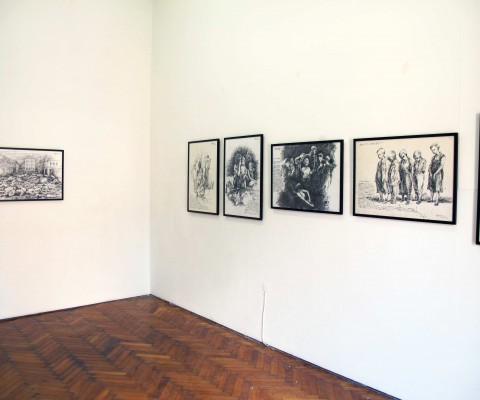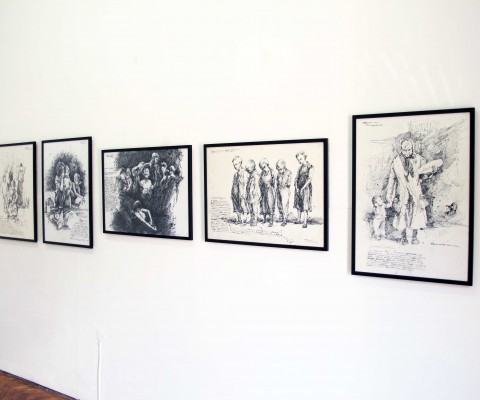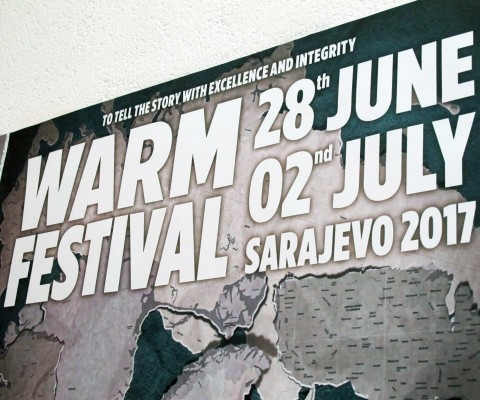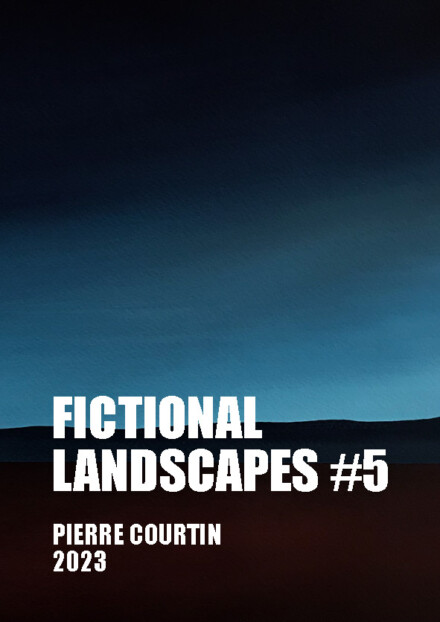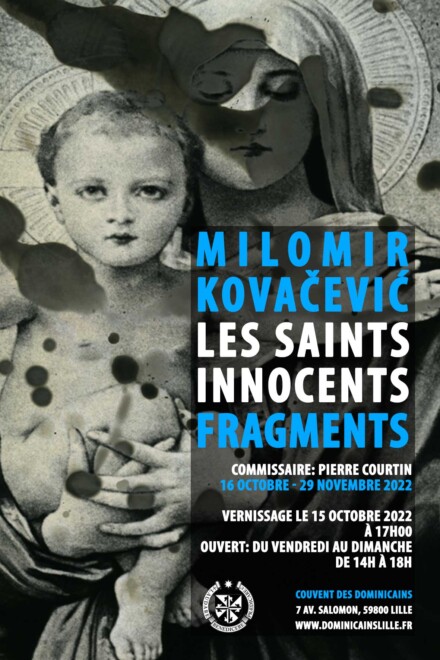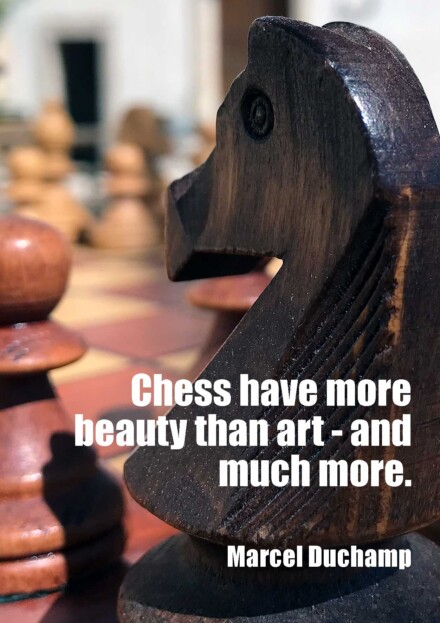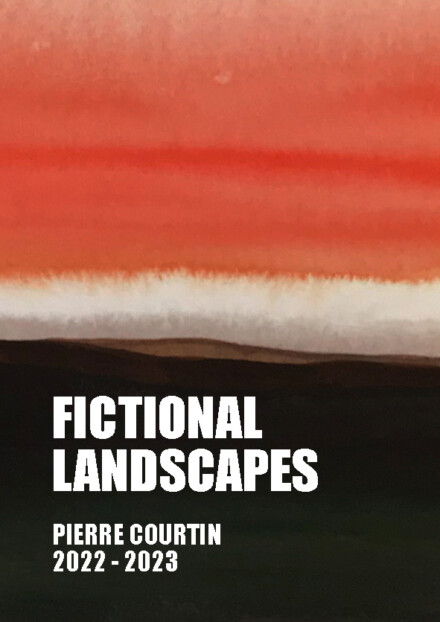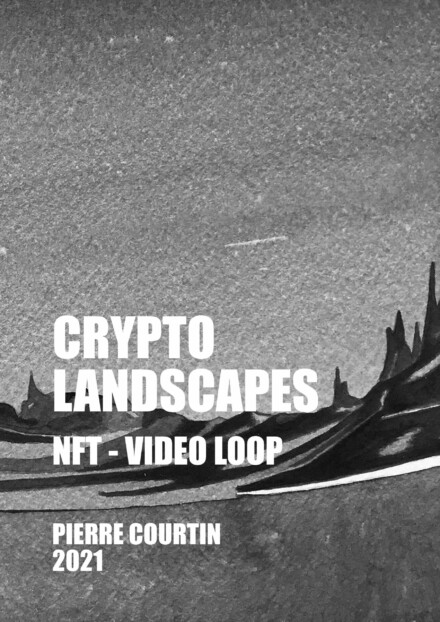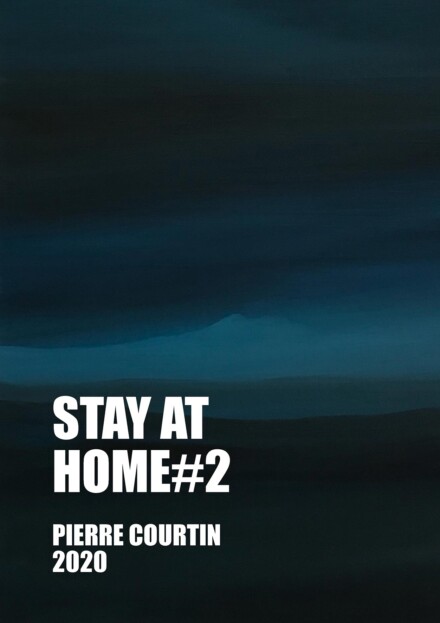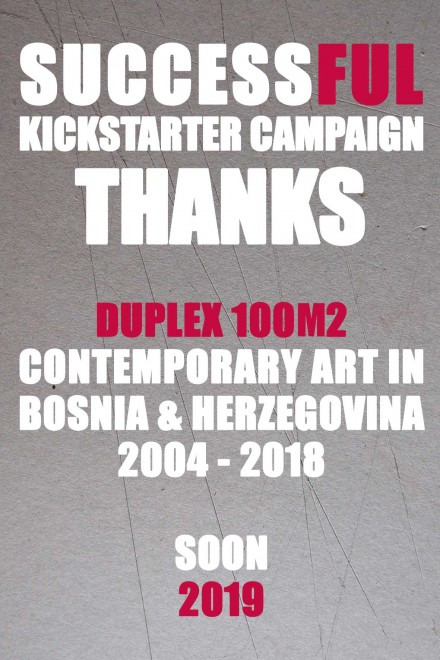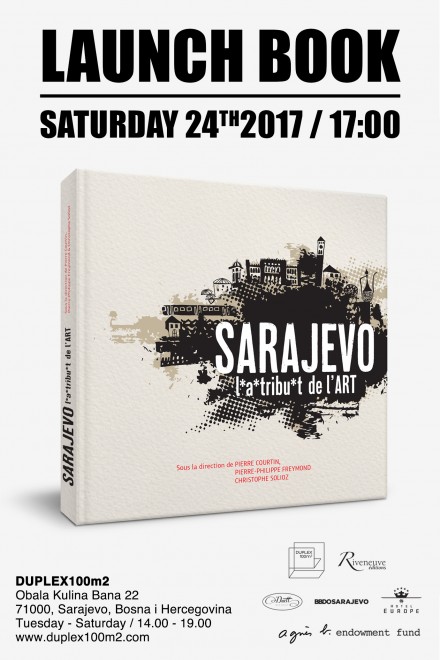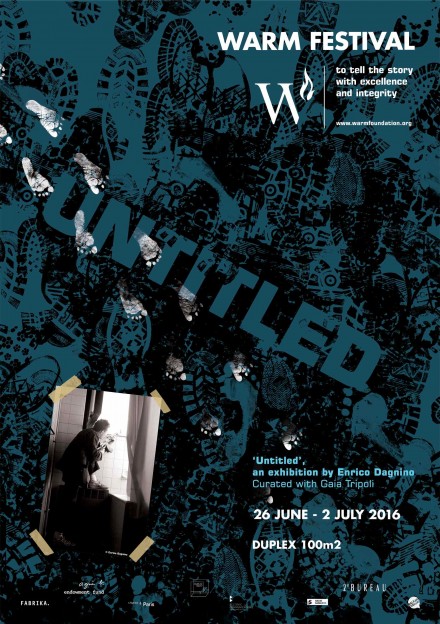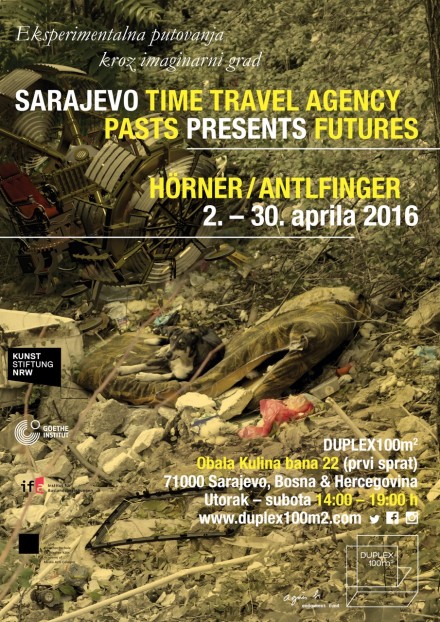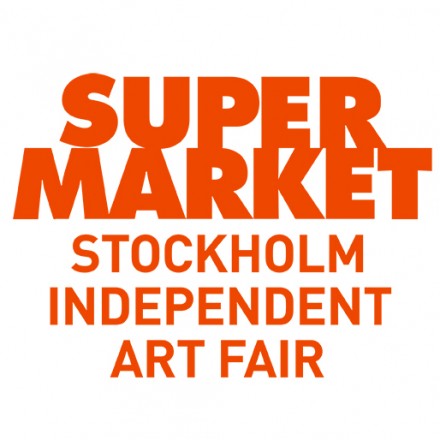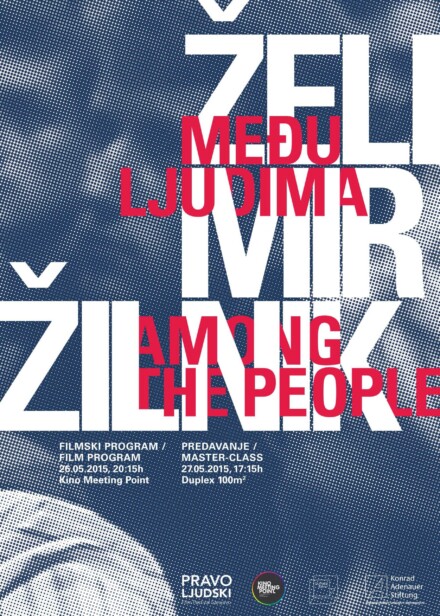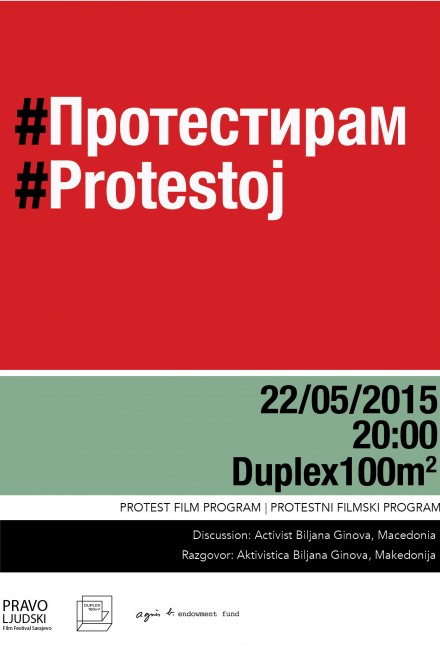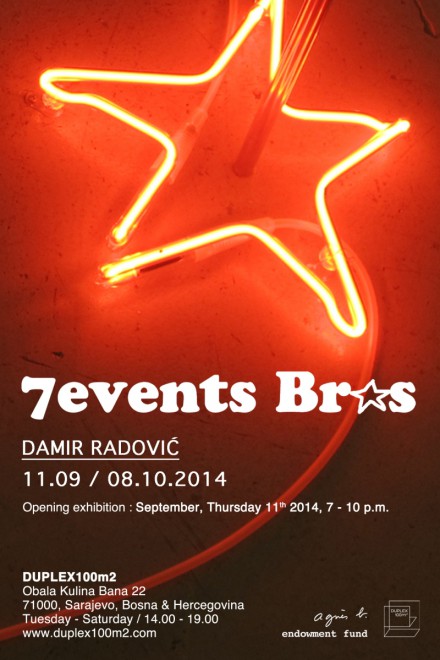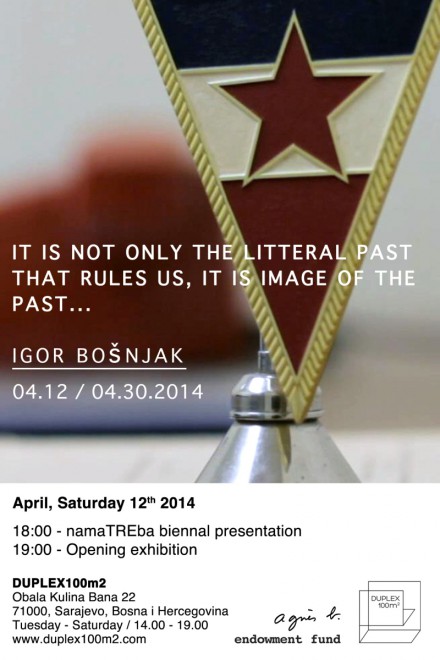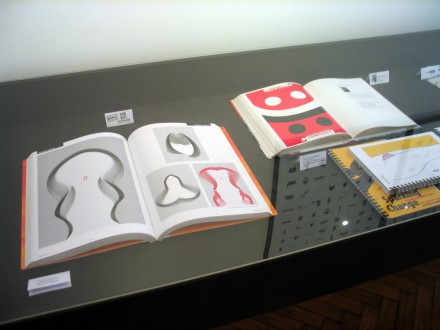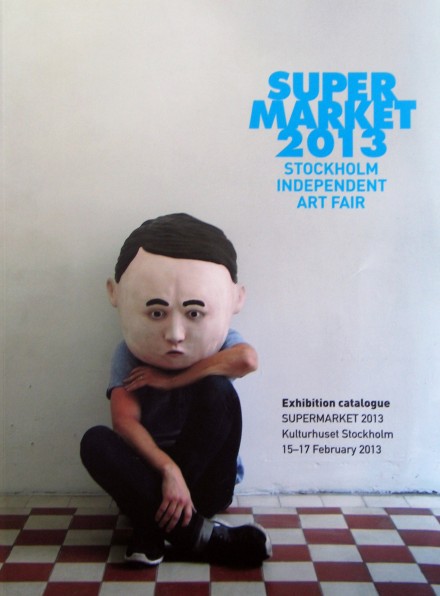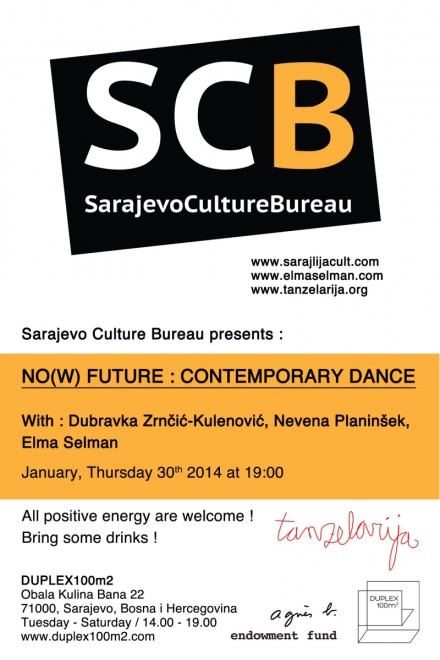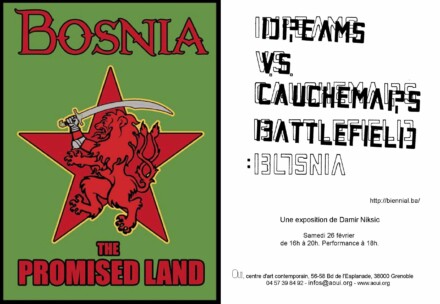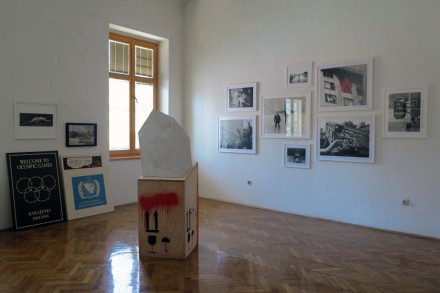Warm festival 2017
In the framework of the WARM festival Duplex100m2 presents a solo exhibition of Mevludin Ekmečić curated by Claudia Zini
The exhibition have been made with the cooperation and support of the Bosnjak Institute, Sarajevo.
Opening exhibition: June, Friday 30th 2017 at 19:00
« All began in the beginning of April 1992 when I passed the bridge upon the river Sava at Bosanski Samac and I couldn’t return because they destroyed it later. I remained on the other side, outside of Bosnia, outside of Tuzla, confused and with a nostalgia which appeared to me unexpectedly. The alternative I had was to note the tragic events in my way. Confused by all these unthinkable events, surprised and astonished, I began to wake up asking myself continuously one question: why, why, why…? » Mevludin Ekmečić, Tuzla, February 1995
Mevludin Ekmečić(1929, Bosnia-Herzegovina)
Genocide upon the Bosniaks 1992/1995
‘All began in the beginning of April 1992 when I passed the bridge upon the river Sava at Bosanski Samac and I couldn’t return because they destroyed it later. I remained on the other side, outside of Bosnia, outside of Tuzla, confused and with a nostalgia which appeared to me unexpectedly. The alternative I had was to note the tragic events in my way. Confused by all these unthinkable events, surprised and astonished, I began to wake up asking myself continuously one question: why, why, why…?’
Mevludin Ekmečić, Tuzla February 1995
During the time of his exile in Paris (1992-1995) Bosnian artist Mevludin Ekmečić made a consistent opus of drawings recording the war that was raging in his country, specifically the ‘terrible genocide upon the people which I belong to’, as he told. His black and white chronicle of the Bosnian conflict is made of 60 drawings (50×70 cm, black ink on paper) which clearly displays the intents of the campaign against Bosnia and Herzegovina, its extent and character. Each drawing is accompanied by his drawn notes in which he attempts to describe in words the images that he has frenetically sketched on paper with black ink. ‘It is not the time in which an artist is allowed to keep silent’ he affirmed. He transposed on paper the terrible images broadcasted on TV and on newspapers by war-journalists who were covering the Bosnian conflict, producing 60 extraordinary drawings that he later divided by subjects: ethnic cleansing, camps, rapes, refugees, children, cultural heritage, how to survive, graves. Among other scenes, he depicted a swaggered Serb soldier hitting his killed victim lying on the earth with soldiers- boots while smoking a cigarette, the massacre in front of the bakery in Sarajevo, the burning down of the National Library in Sarajevo, an industrial hall in which victims of the ethnic cleansing are lined up and beside them their shoes, a woman being raped in front of her parents and many more, portraying ‘a unique chronicle of evil’, as the drawings were later descripted.
A catalogue was printed in 1996; it is reported that a part of these drawings was published in Bosnian and French media and showed in one exhibition in Paris and one in Belgium. The artist donated all the drawings to the Bosniak Institute in Sarajevo, where they are now being conserved. Only a small part of them is on display for the public.
Before the war, Ekmečić was an academic painter whose themes were mostly nudes, portraits and motifs from Baščaršija. He became a war artist for the urge of documenting the destruction of his country, the violation of human rights and the effects of the war on individuals. Ekmečić’s unique drawings are the most significant artworks dealing with the conflict in Bosnia-Herzegovina that I have found so far, and presumably also the less acknowledged. I also honestly believe that their quality and excellency can be easily paragoned to Goya ‘The Disasters of War’. I also believe that the exhibition of Mevludin Ekmečić’s fascinating documentation about the Bosnian war within the framework of the Warm Festival would perfectly fit with the mission of the Warm’s foundation to bring together excellent stories about contemporary conflicts around the world.
Claudia Zini


